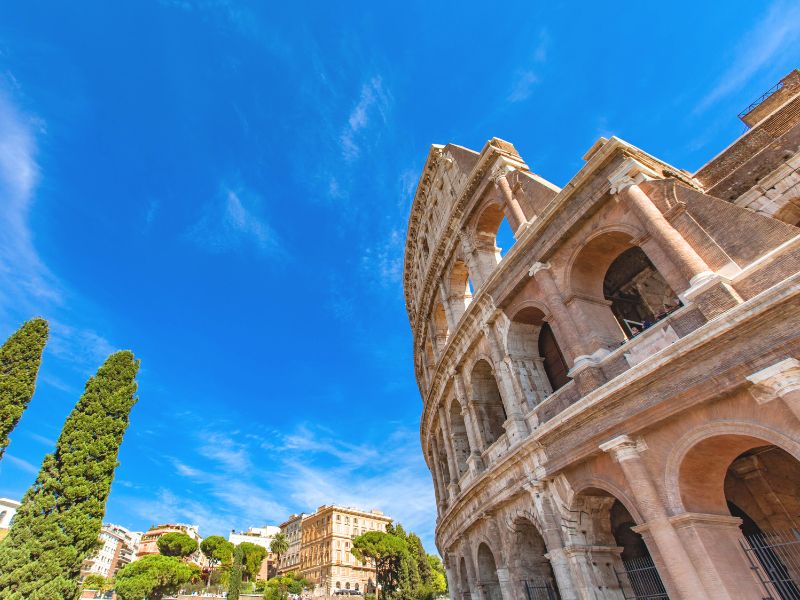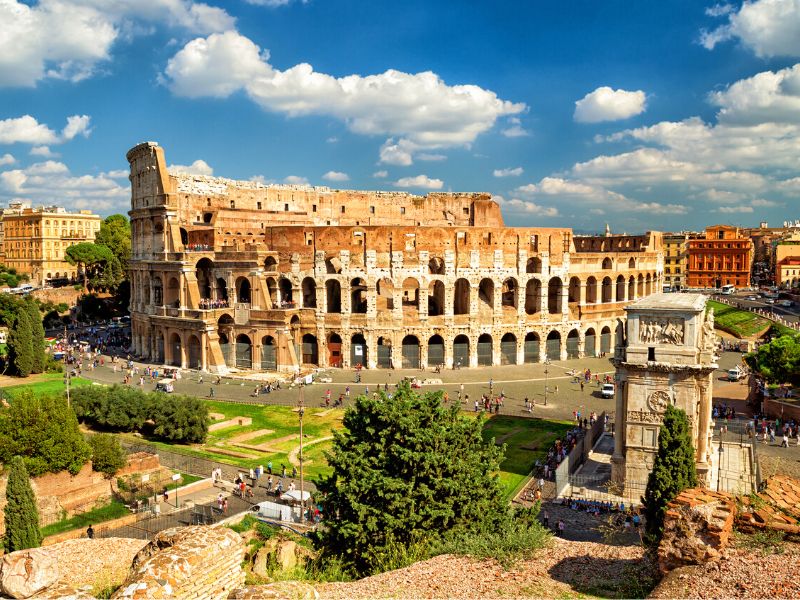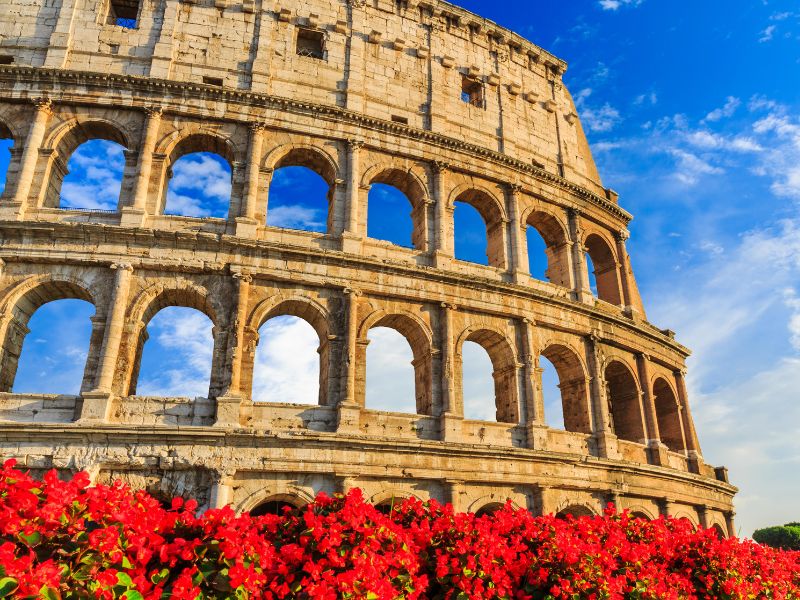

Emperor Domitian, who ruled from 81 to 96 AD, left a notable mark on Palatine Hill with his extensive architectural projects.
The Stadium of Domitian, often misidentified as a hippodrome, is one such structure, showcasing his commitment to grandeur and public entertainment. This stadium, lesser-known compared to the nearby Colosseum, demonstrates the sophisticated urban design of his era.

Situated on Palatine Hill, the Domus Flavia forms part of the larger Flavian Palace and was used for conducting public affairs. This palace complex, an emblem of imperial power, is recognized for its expansive courtyard and monumental architecture.
The grandeur of the Flavian Palace overlooks the Circus Maximus, revealing the rulers’ interest in linking their residence with the spectacle of chariot racing.

The amalgamation of luxurious residences on Palatine Hill includes the Imperial Palaces of both Augustus and Tiberius. Augustus resided in a relatively modest house, which later became part of the larger Palatine complex. In proximity stood the Domus Tiberiana, another piece of the expansive puzzle of imperial architecture. Both the Houses of Augustus and Livia and the Domus Tiberiana offer precious insights into the domestic life of Rome's earliest emperors.






27,000+ reviews
Gain priority access to the Colosseum and the Roman Forum and Palatine Hill with these timed tickets. These allow you to visit the first two floors of the amphitheater at your preferred time slot and then explore the rest of the rest of the archeological park at your own pace.
Best price:
€23






1,000 + reviews
Skip the long waiting lines at the Colosseum and explore the amphitheater along with its vast archeological site in the heart of Rome, which includes the Roman Forum and Palatine Hill. These last-minute tickets also include an option audio guide that you can download.
Best price:
€28






500+ reviews
Immerse yourself in the rich history of Rome with fast-track entry to the world-famous Colosseum, along with the Roman Forum and Palatine Hill. Before your visit, you can enjoy a multimedia video about Rome's most famous monuments.
Best price:
€33.90
On Palatine Hill, visitors can explore a range of ancient Roman buildings, from the grand imperial palaces to the remains of luxurious houses and temples.
Tickets to Palatine Hill can be purchased online or at the entrance. A combined ticket is available that also grants access to the Colosseum and Roman Forum.
Palatine Hill is steeped in history, known as the place where Rome was founded and the home to Rome's emperors and aristocracy during the Empire.
Noteworthy is the Hill's status as the centremost of the Seven Hills of Rome and its purported location of the Lupercal, the cave where Romulus and Remus were said to have been nurtured by the she-wolf.
Palatine Hill is a must-see for its rich archaeological significance and breathtaking views of the Roman Forum and the city.
While Palatine Hill was primarily a residential and ceremonial area for Rome's elite, the Roman Forum served as the center of daily life in Ancient Rome, with temples, markets, and public buildings.